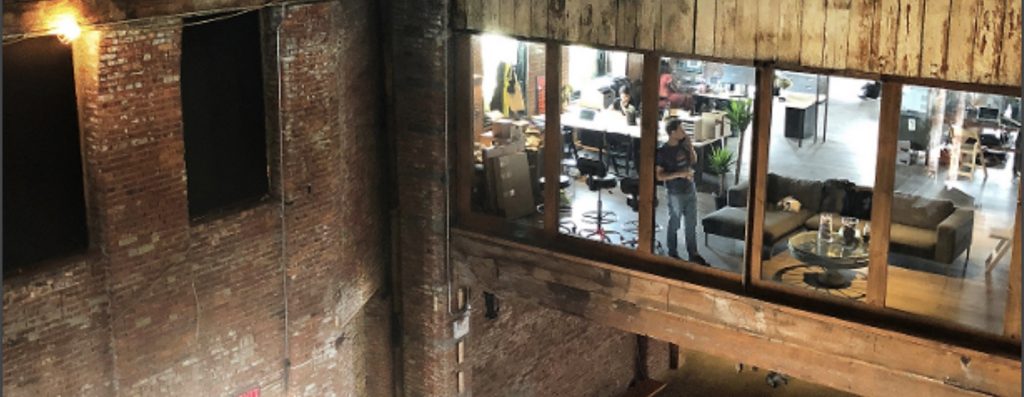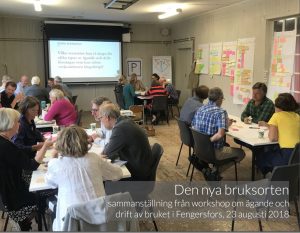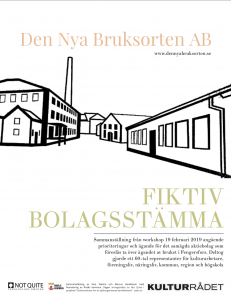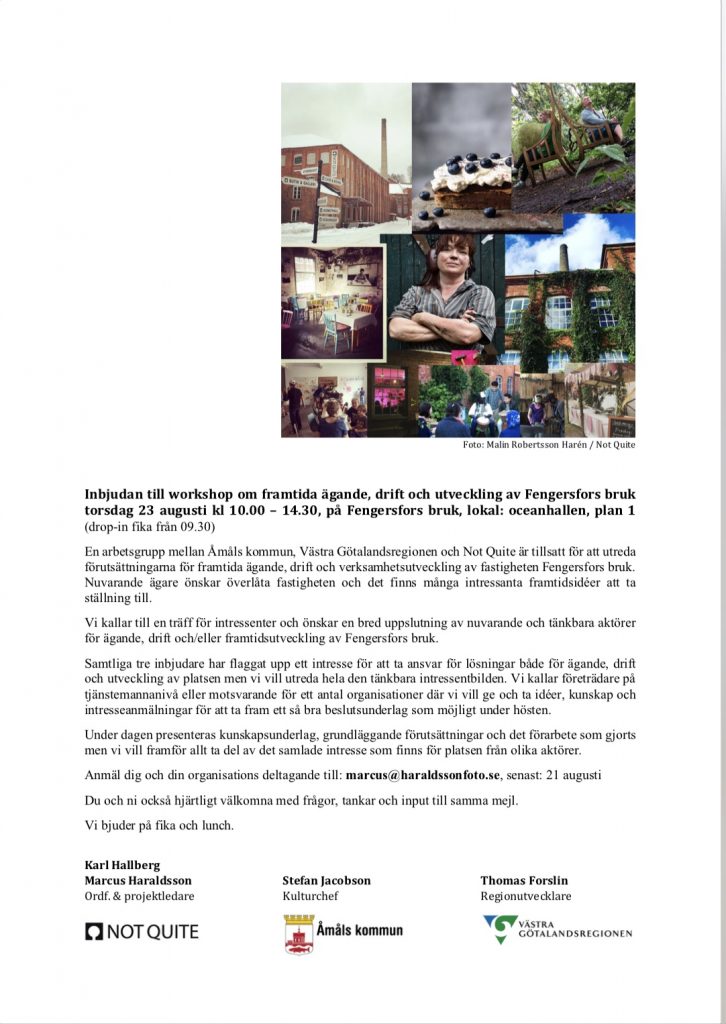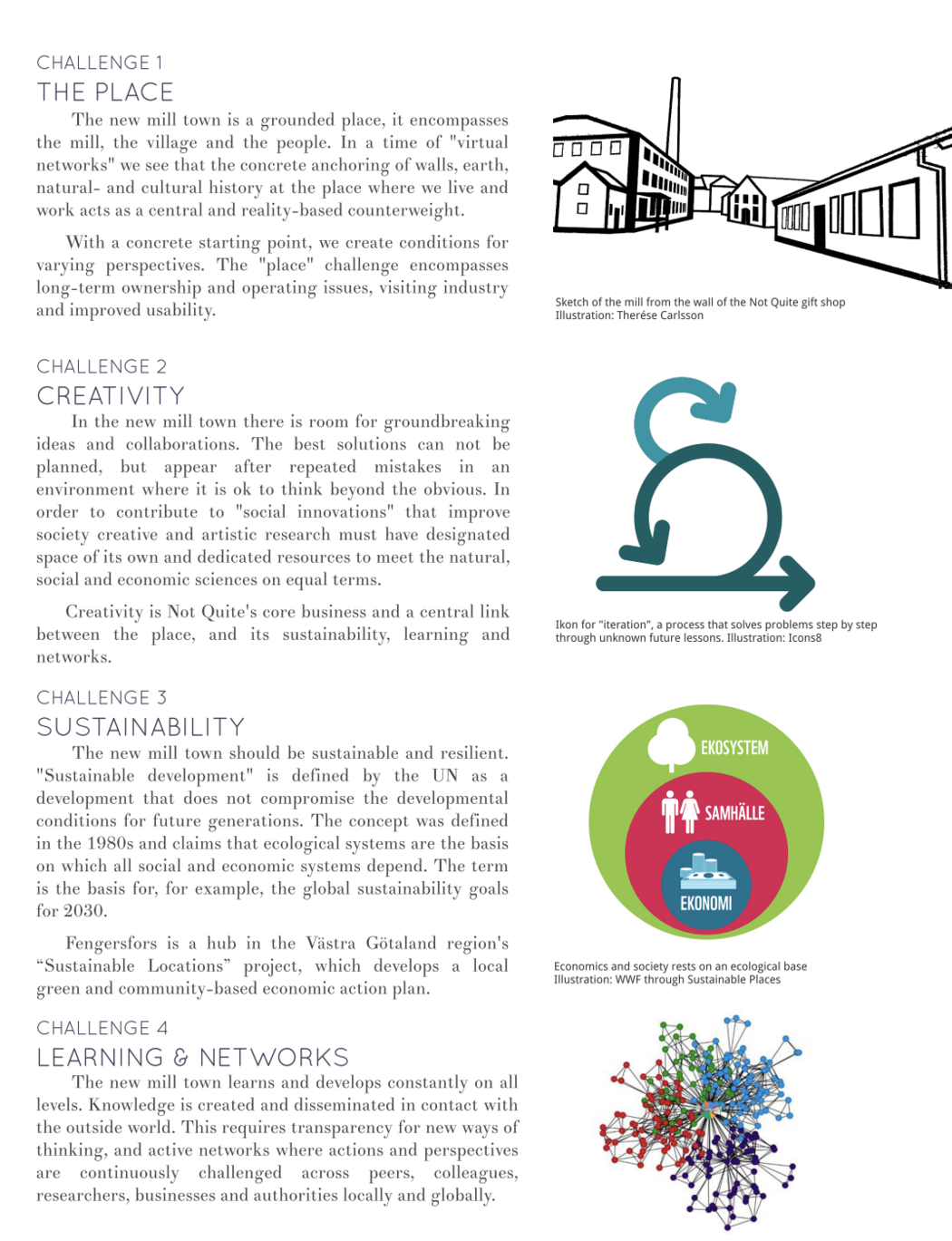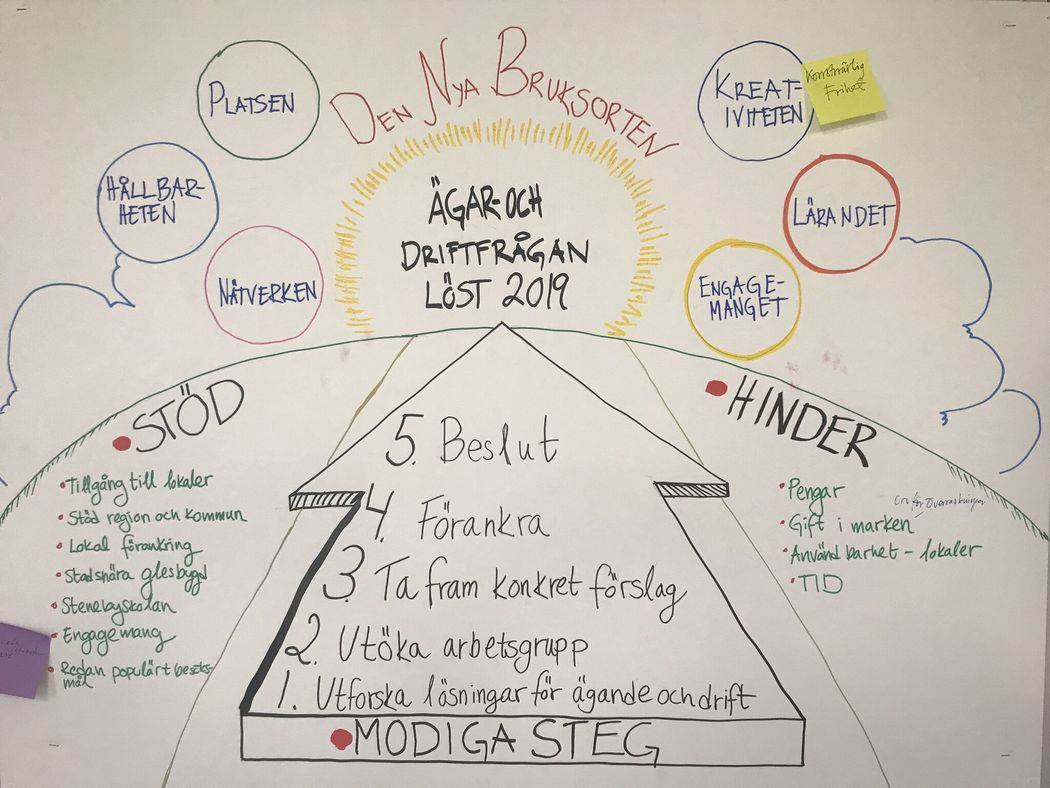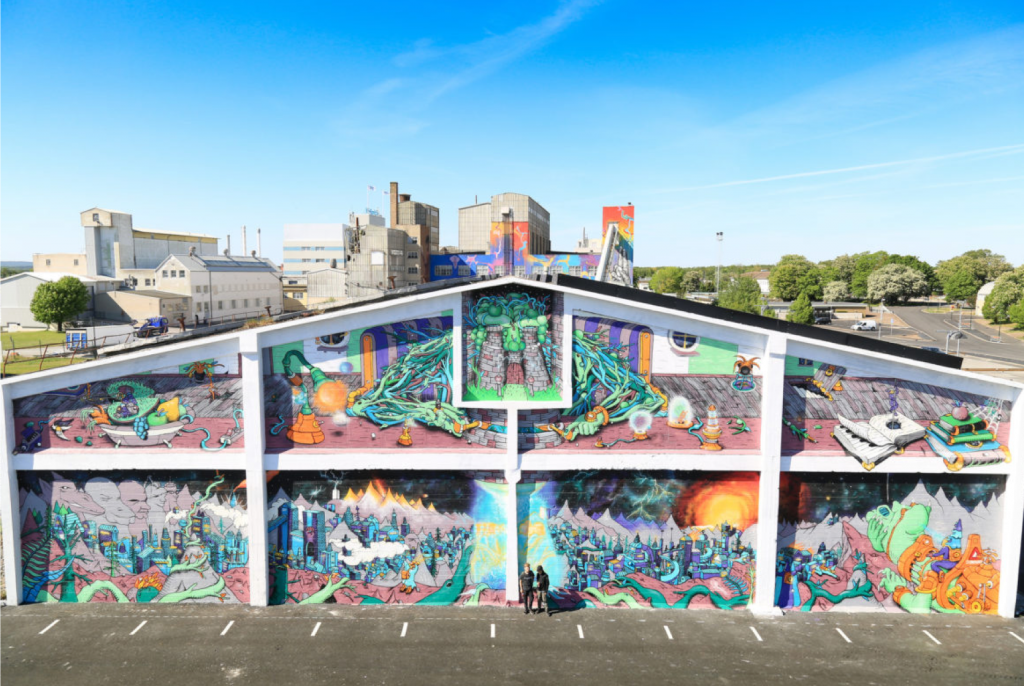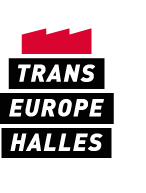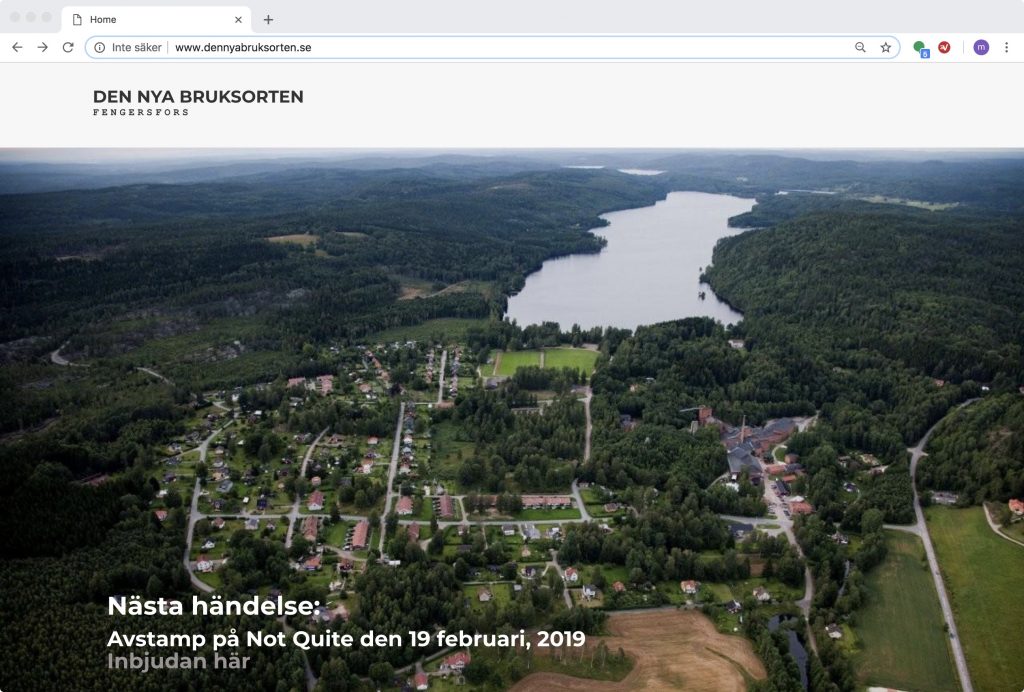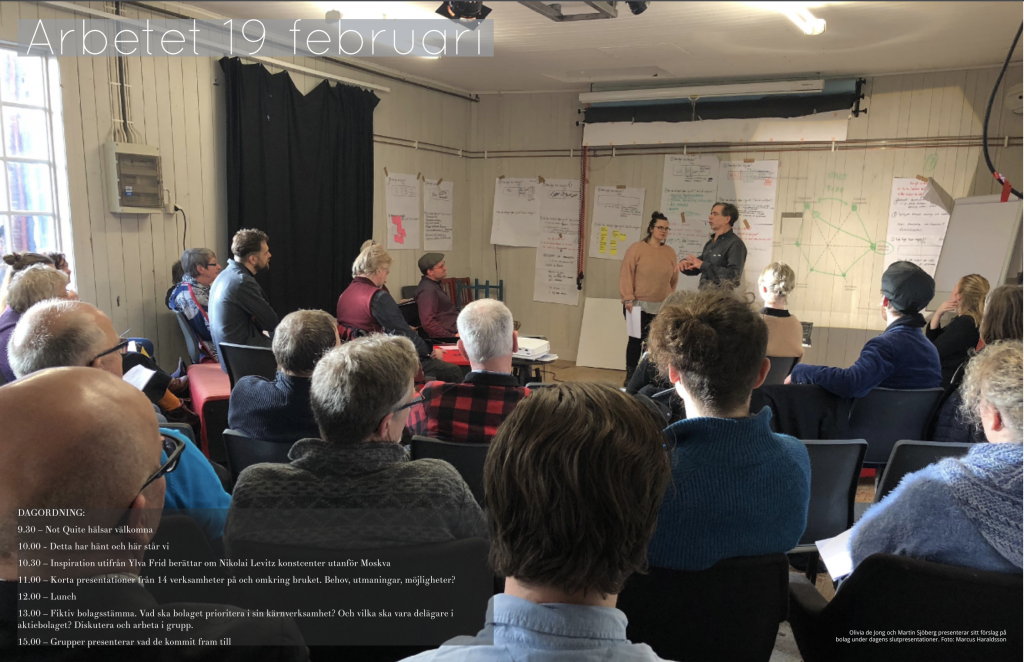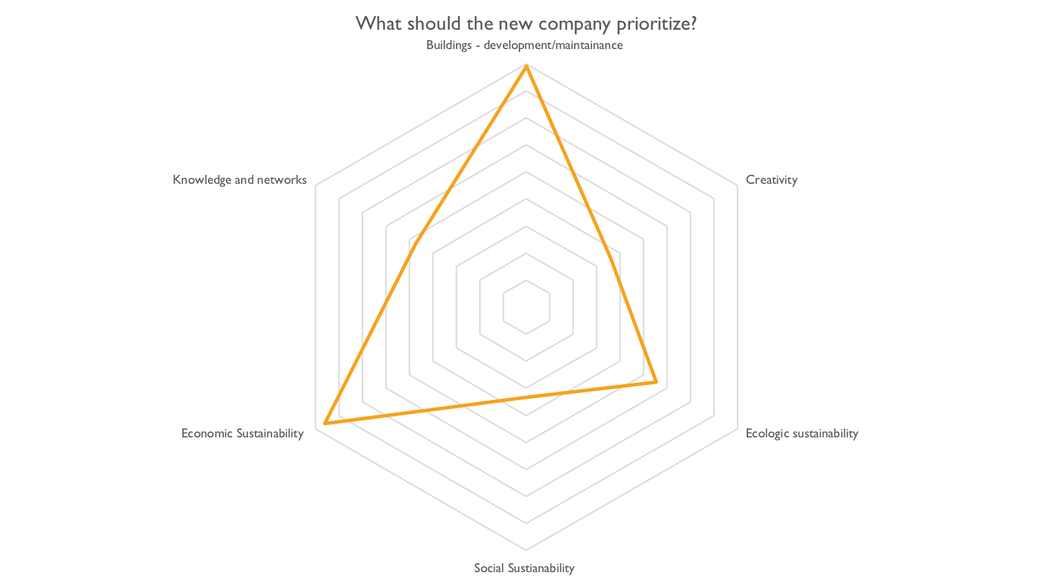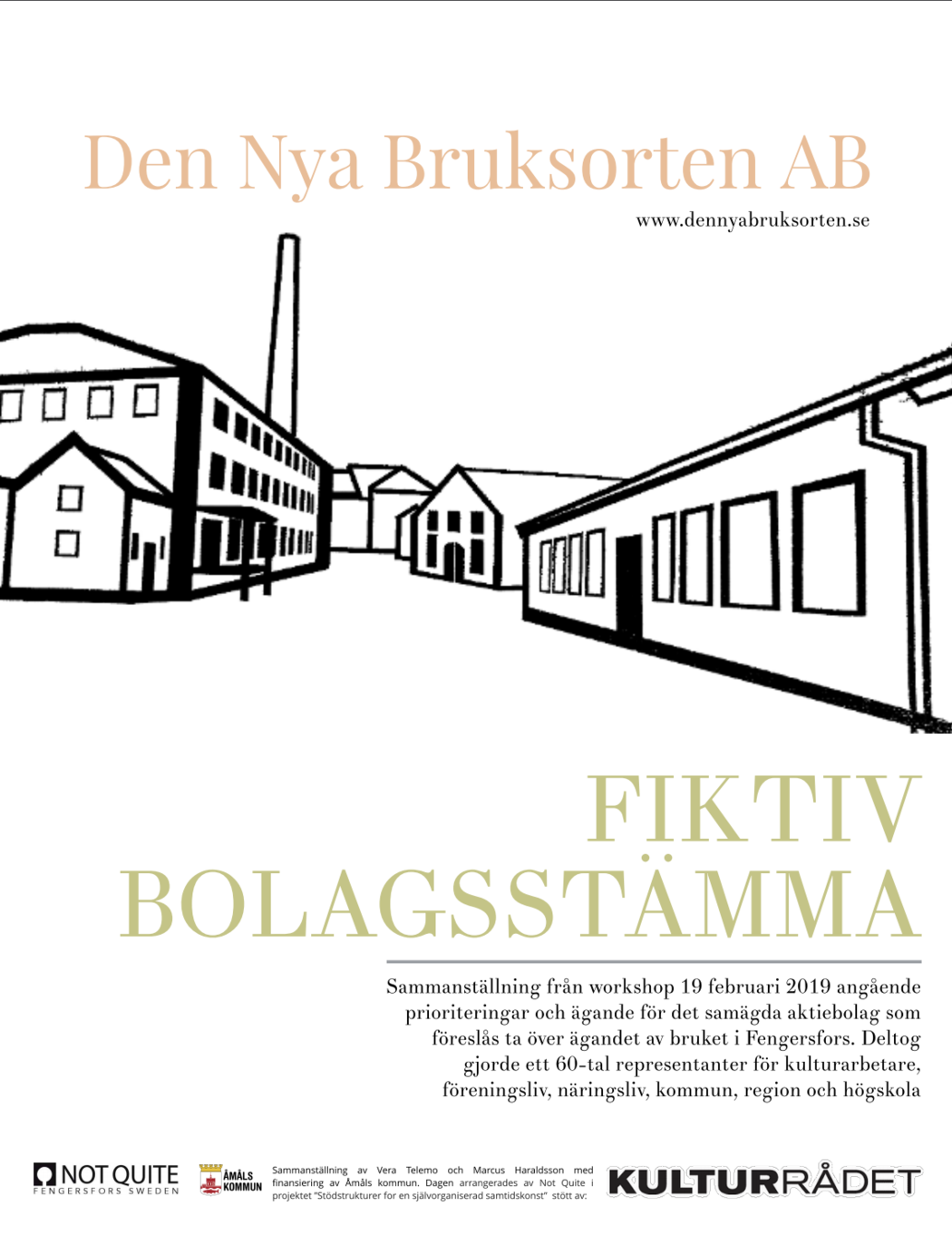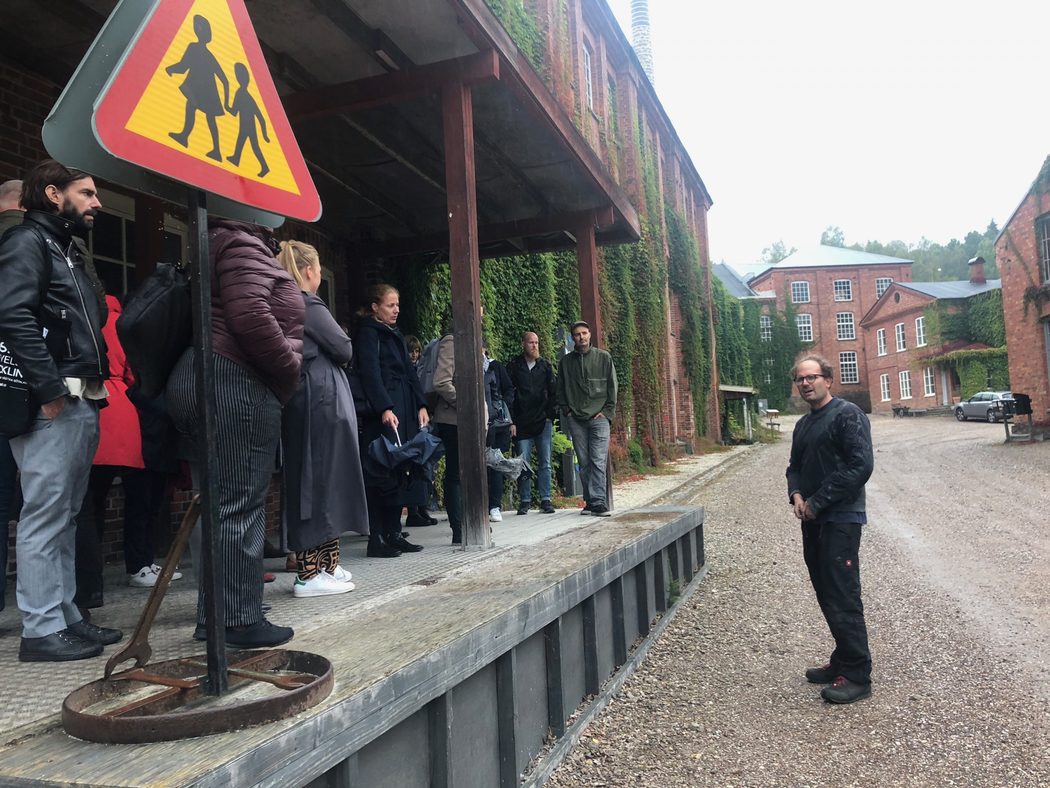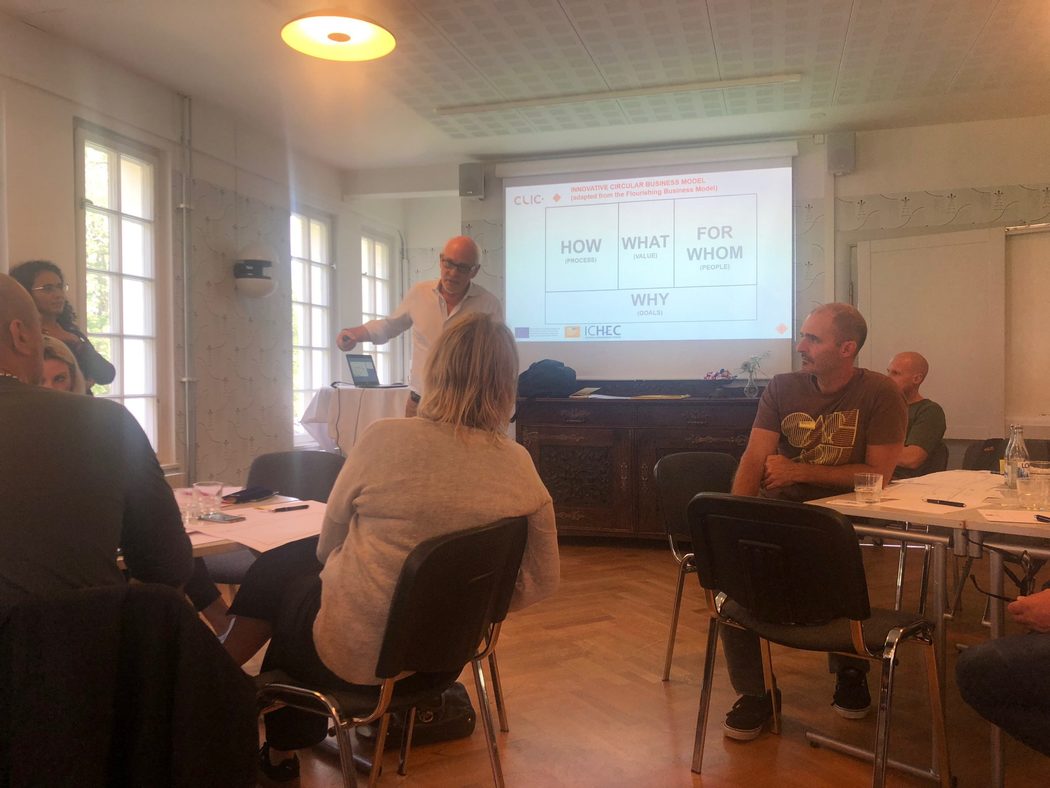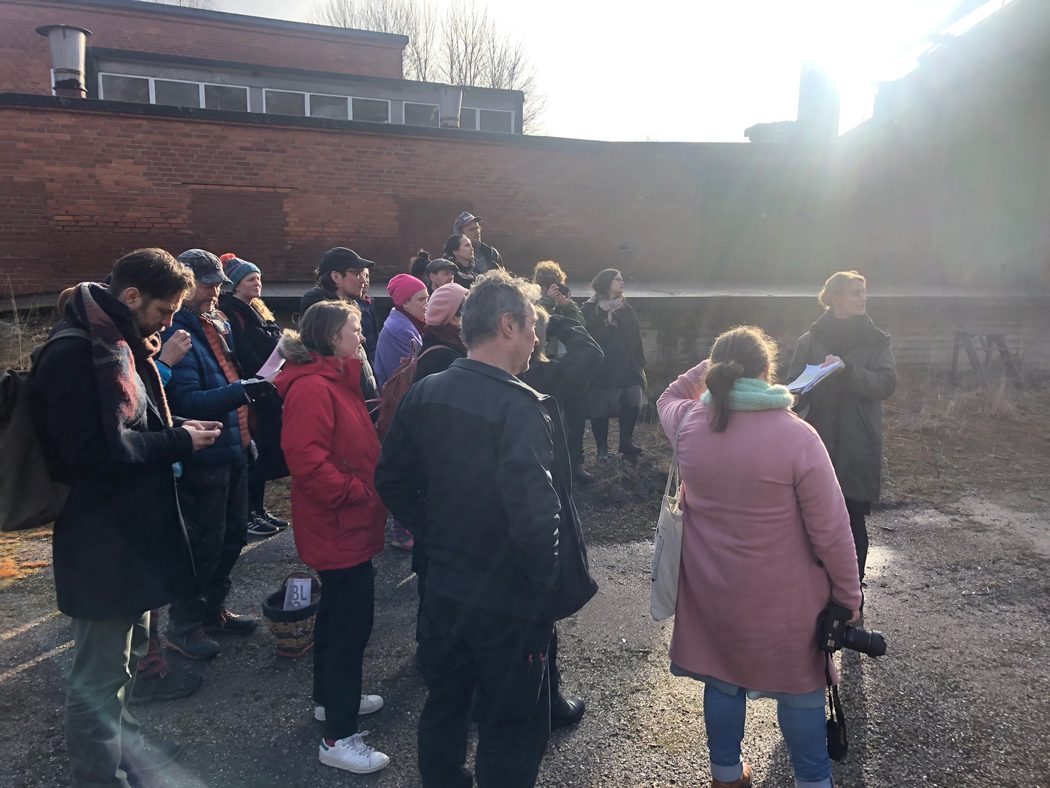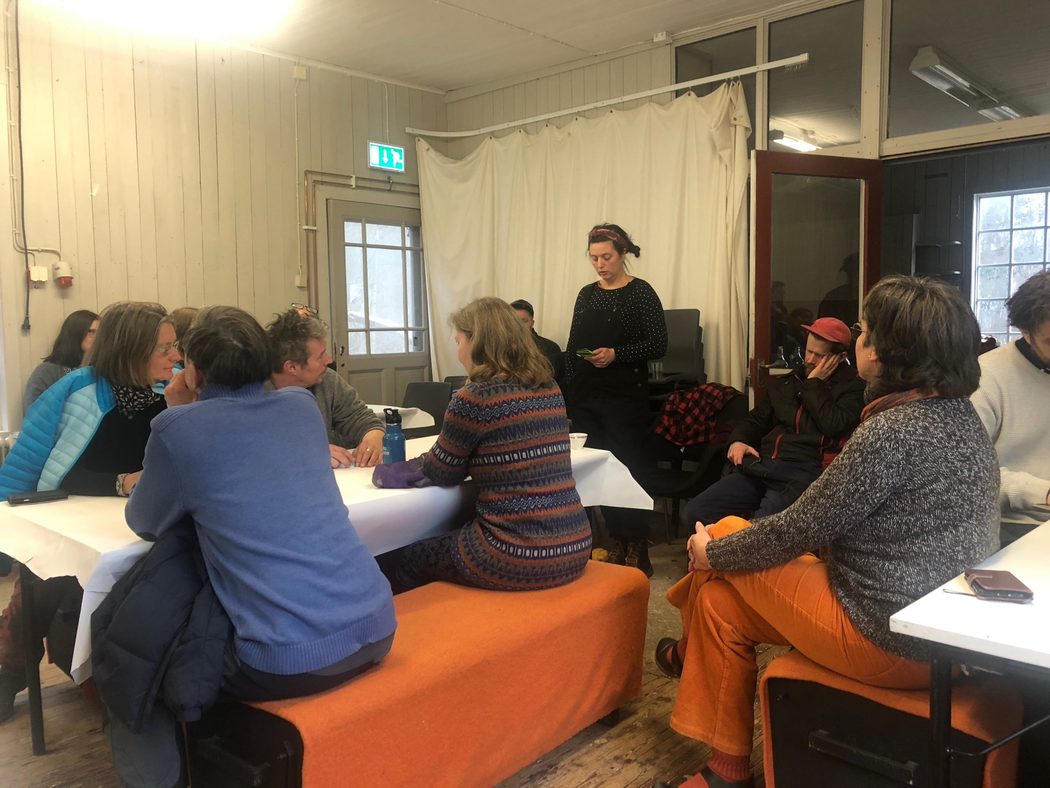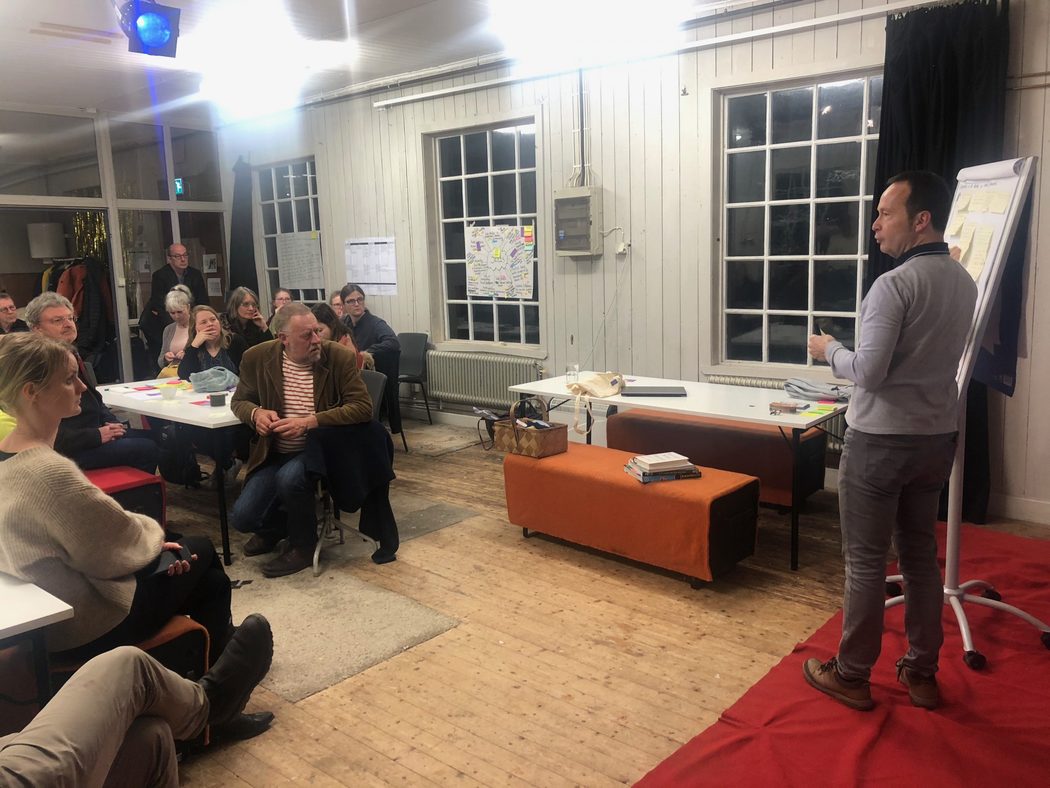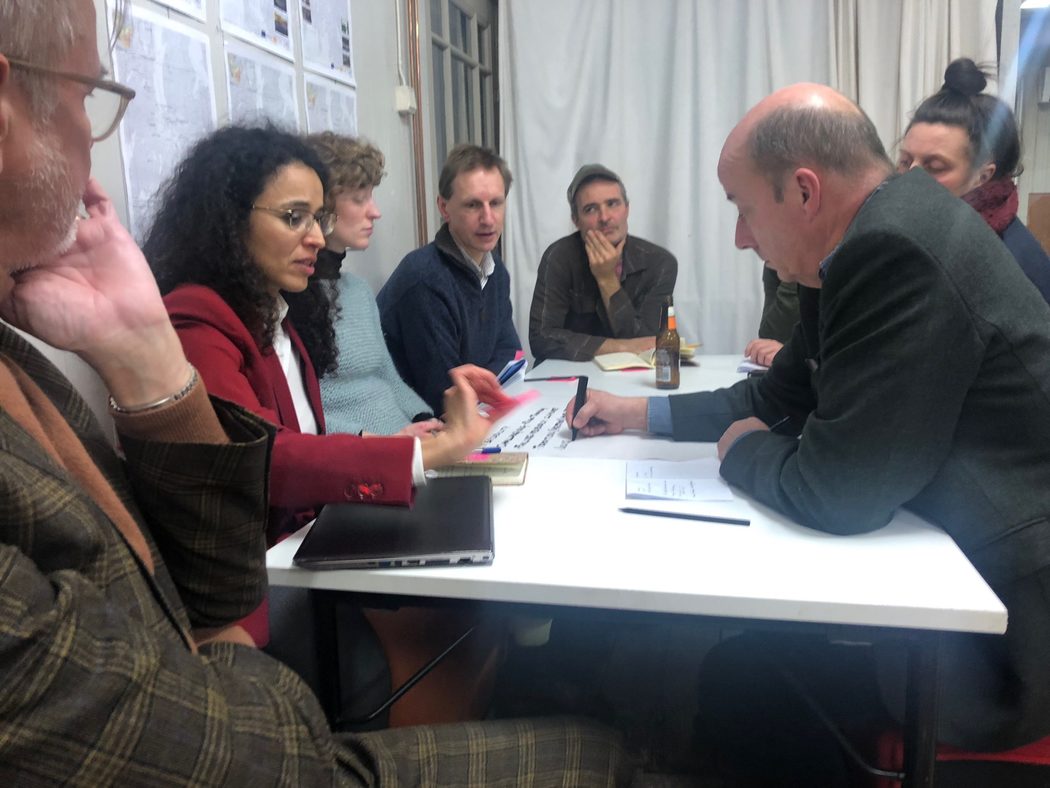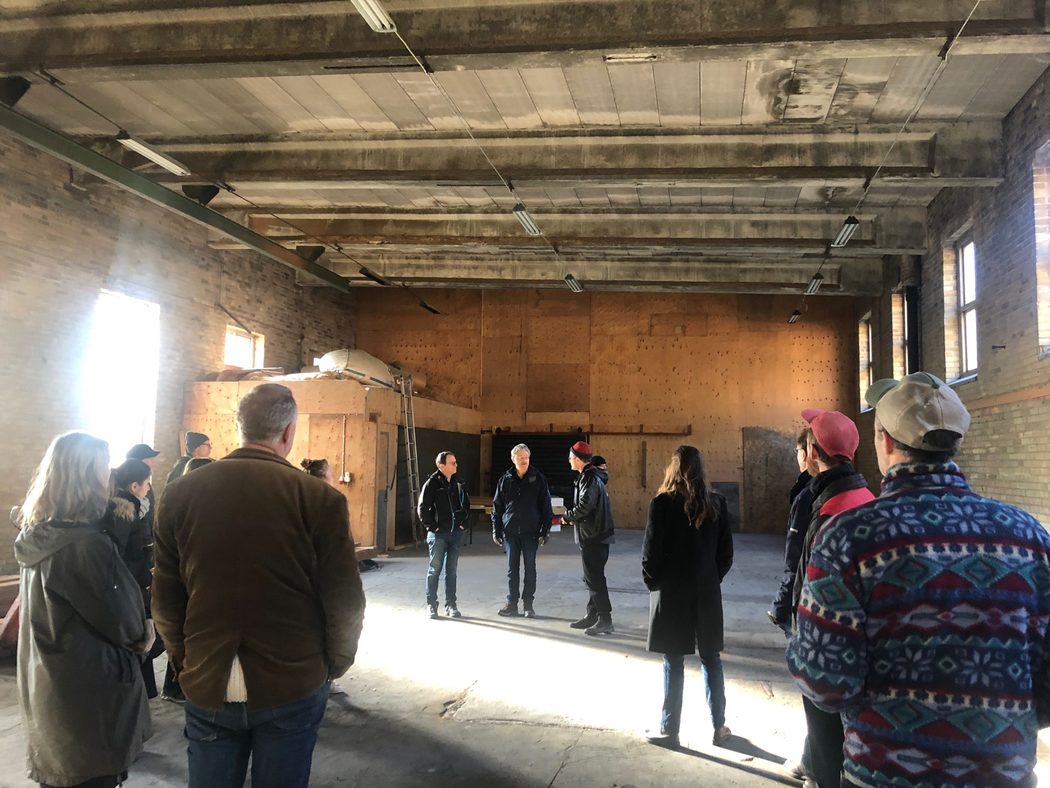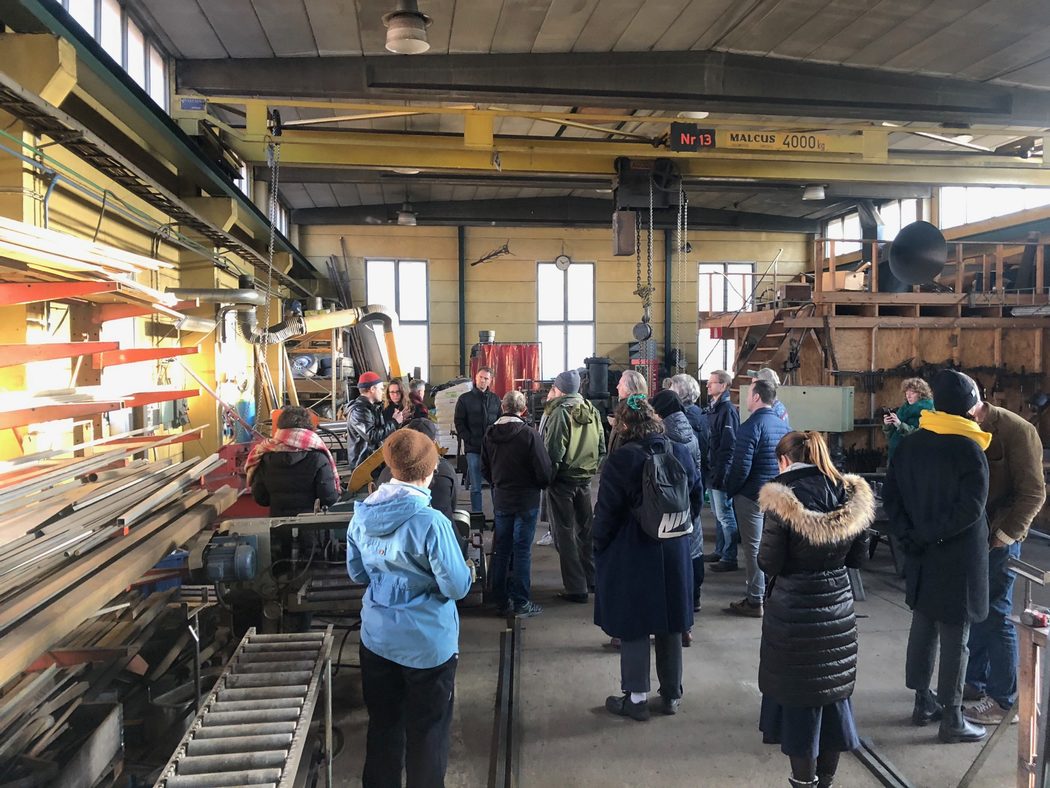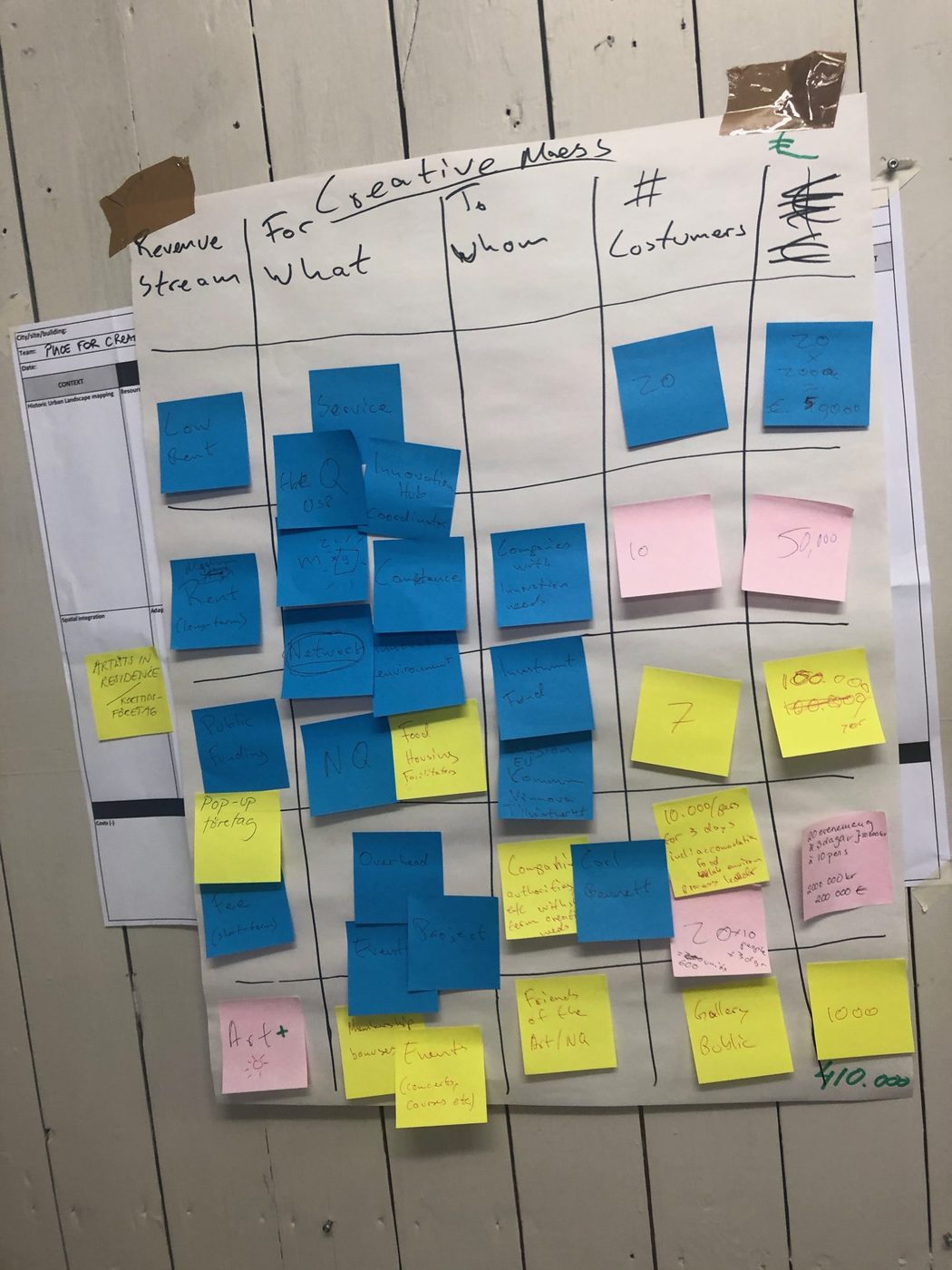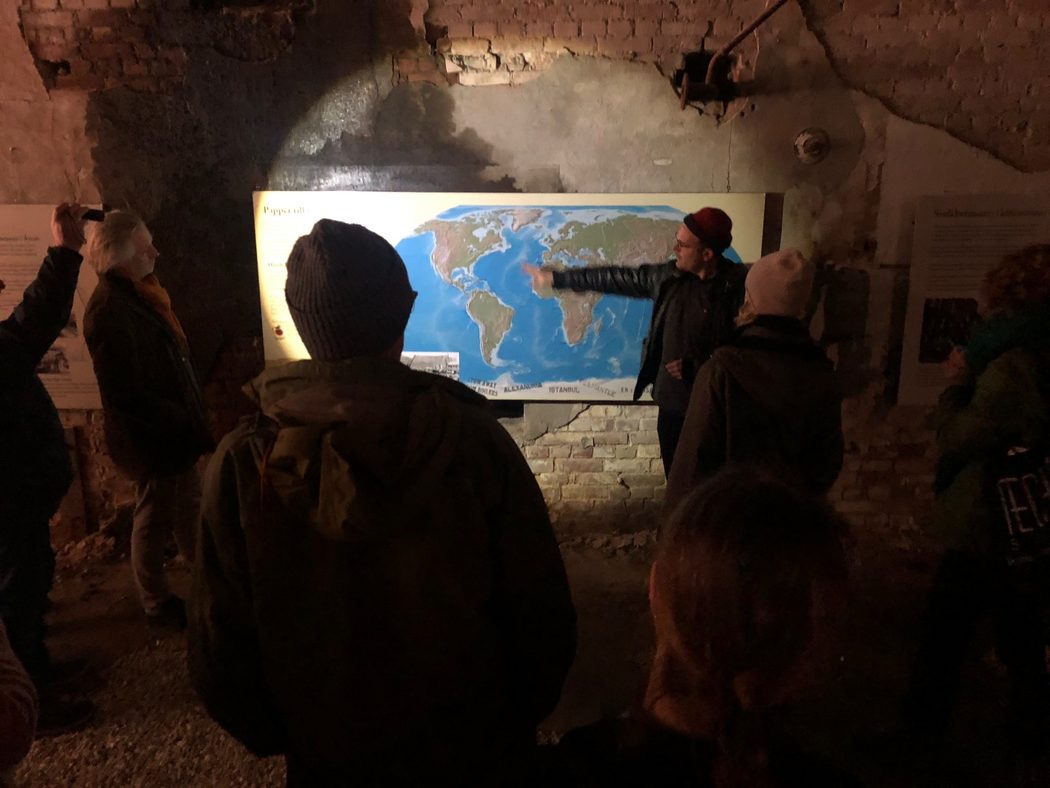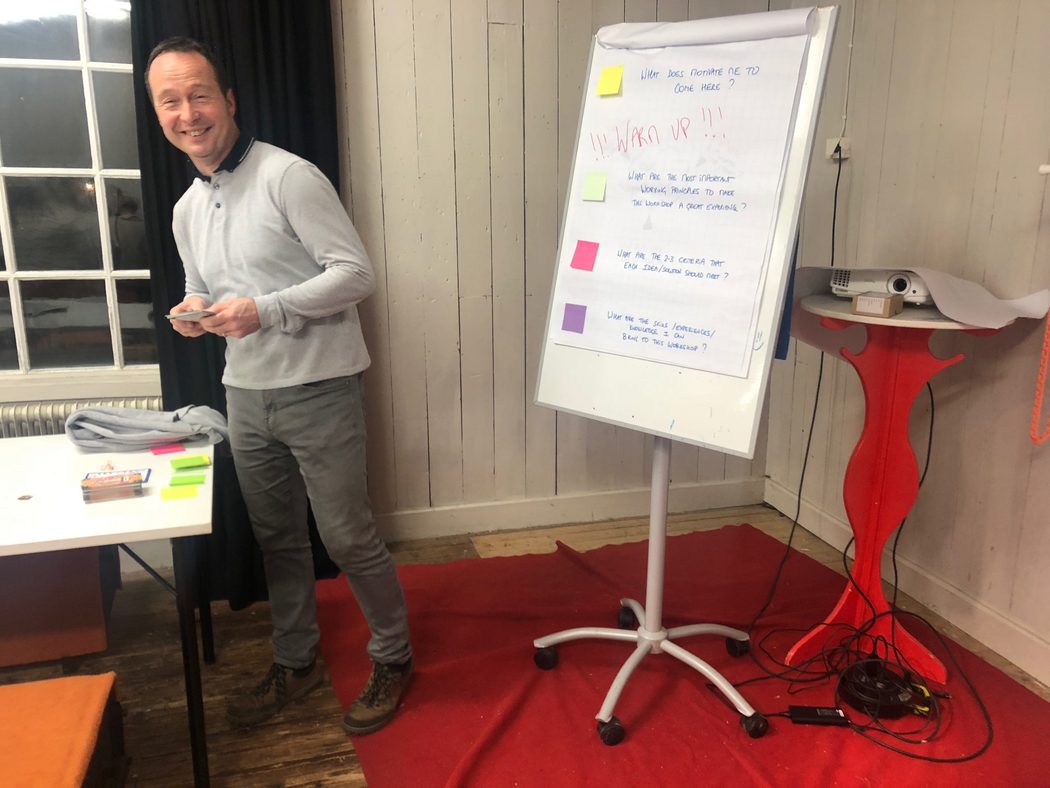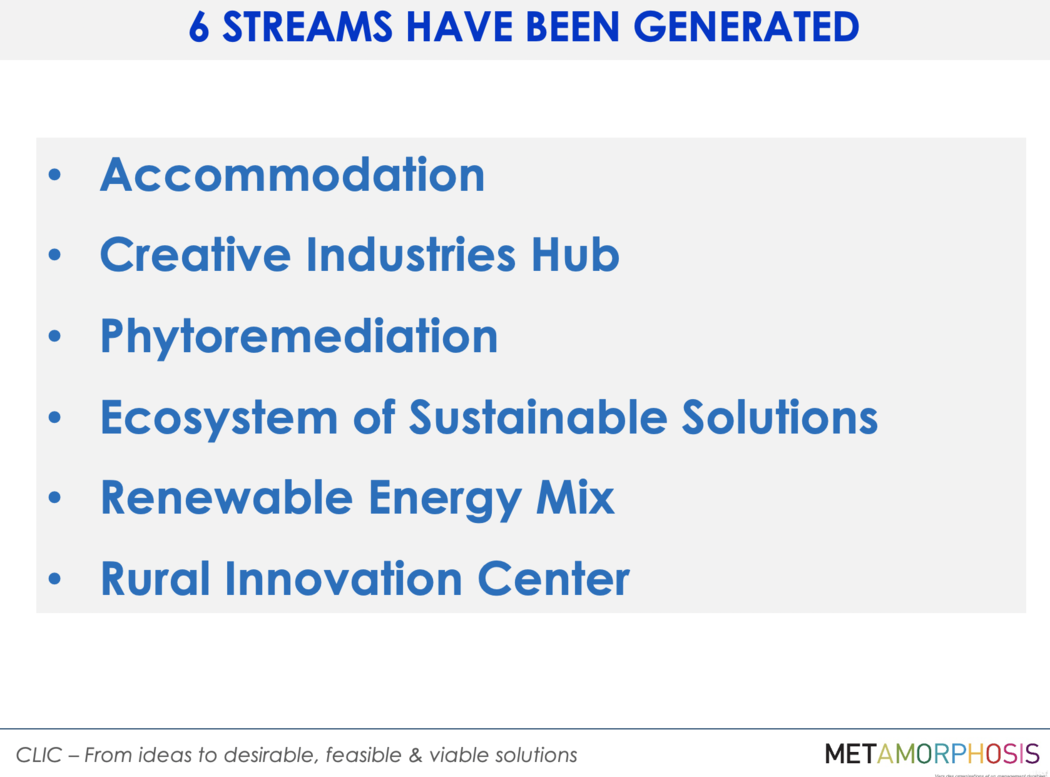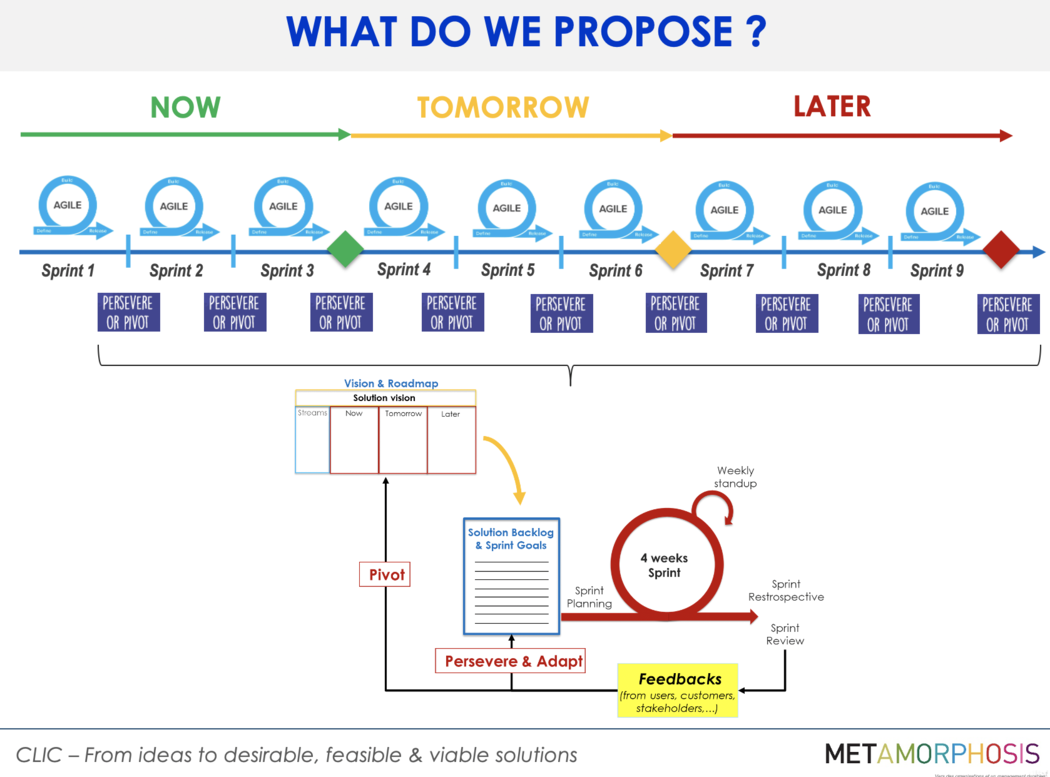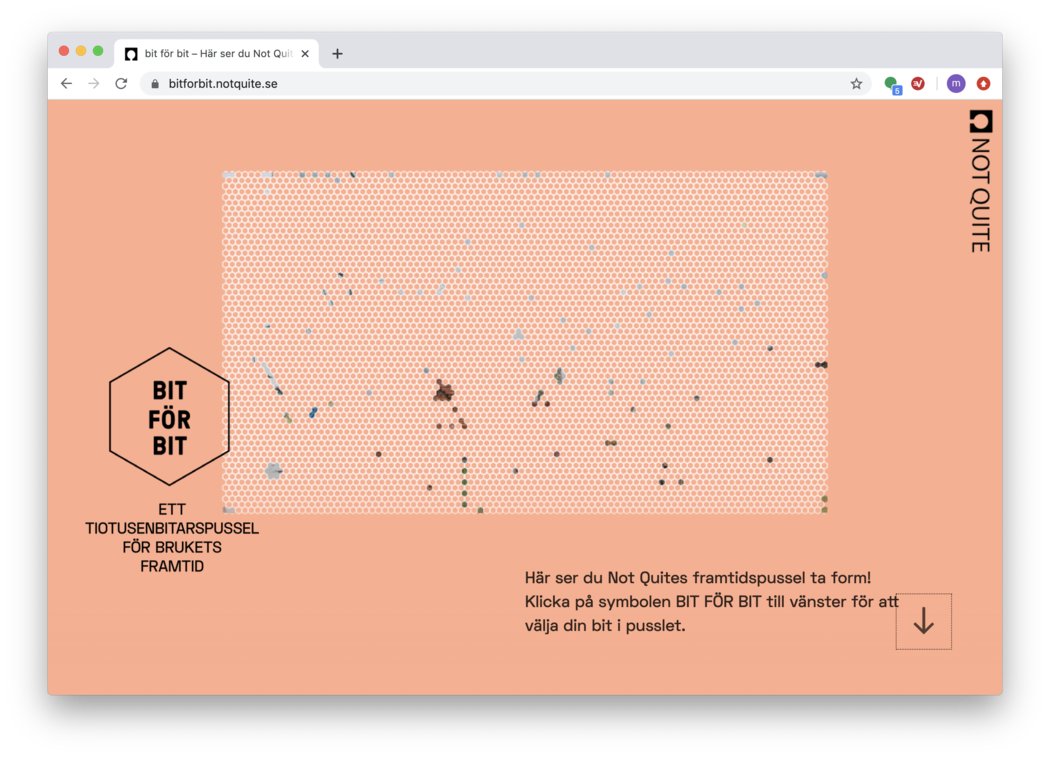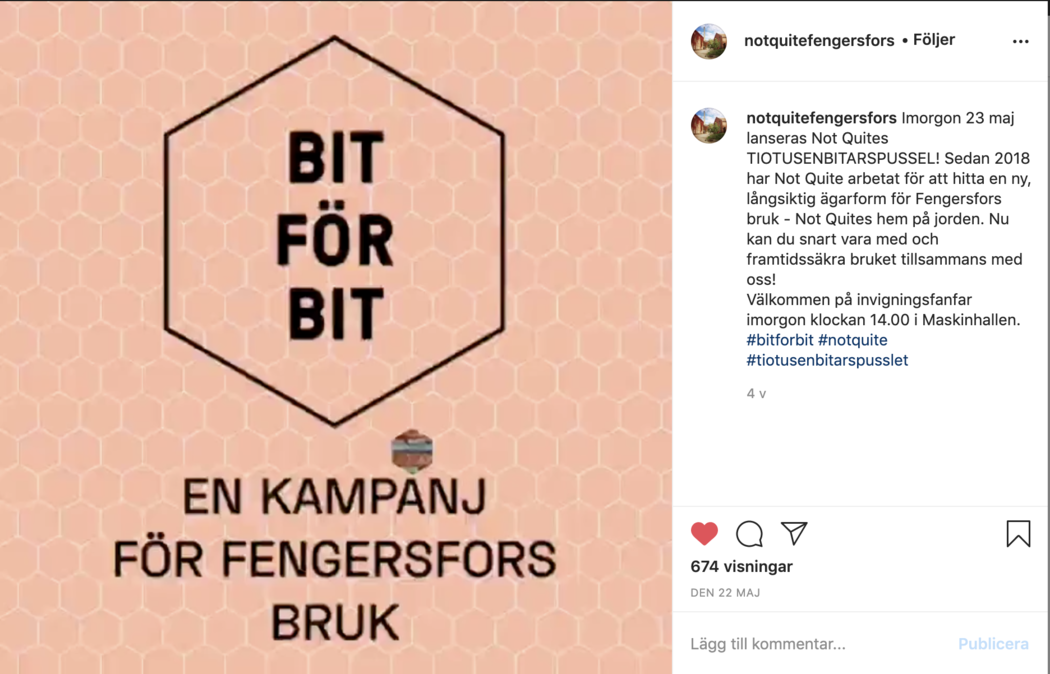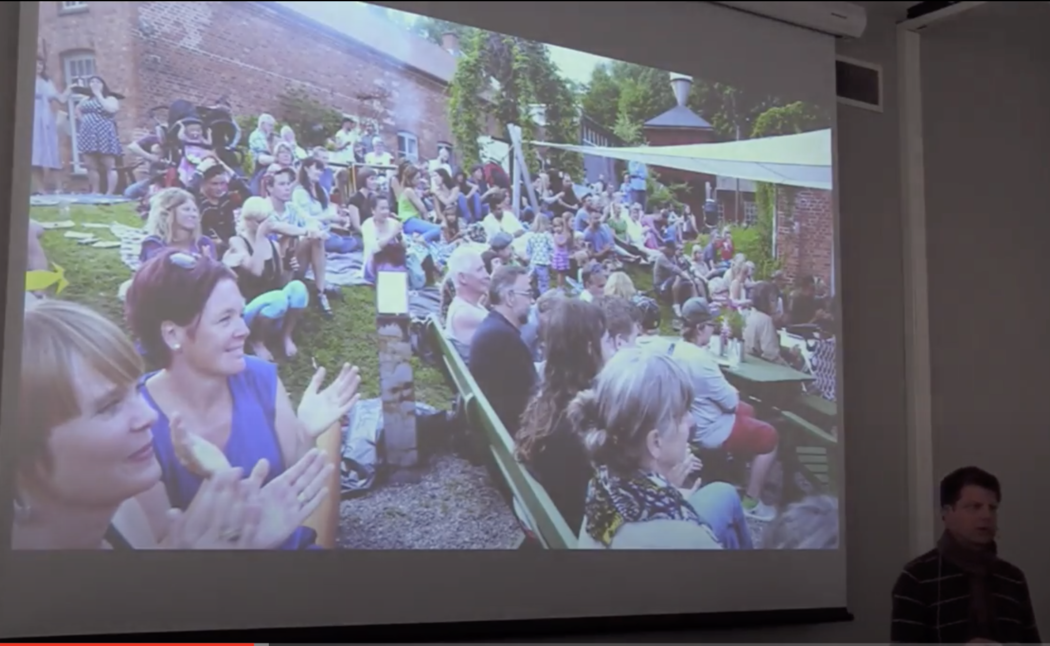Why
The mill in the rural Swedish town of Fengersfors is for sale and – as an artist cooperative active at the mill for 15 years – Not Quite see this as a chance to mobilize our community and co-create a sustainable future.
Location
Not Quite, Fabriksvägen, Fengersfors, Sweden/12.467609000000039,58.994584,4/1000x300.png)
Characteristics
Area
Fengersfors town is firmly rural (for being a town), 20 minutes drive from the town of Åmål, and 2:30 to the city of Gothenburg.
The average income is SEK 208.000 per year, which equals 76% of the national mean, so for Swedish standards it is relatively poor.
Homogeneity is hard to measure, but the overwhelming majority of villagers are born in Sweden and has Swedish as their mother tongue
The town has a school, kindergarten, grocery store, bakery, town hall, cultural
association, sports club, several B&B, beach and Not Quite cultural center.
Audience
The town has 538 registered inhabitants, the cultural center has 67 co-owners. It is a small place.
28% of inhabitants are aged 16-44 years and an equal amount are 45-64 years, 24% are over 65. So relatively old.
Most people in town know, or know about each other, but maybe artists and townspeople can get to know each other better and work towards an even more common future.
How the audience/participants were reached or discovered
The target group of the project are co-owners of Not Quite, and townspeople of Fengersfors and surrounding areas.
In the town we have so far worked with the Community Council (byalaget) and the project group for project Sustainable Places (Hållbara platser) and reached out through their channels and meetings.
Not Quite has a pretty tight community, Facebook groups, email-list etc. And meet each other fairly regularly.

Check-in at the workshop on June 17, 2018. Each person answer: Who am I? What do I want with this day?
How it was done
How
Lectures
For this work we used lectures mostly as a way to get everybody on the same page, and describe basic concepts.
We have done very few “knowledge lectures” – instead tried to harvest as must knowledge and ideas as ever possible from the participants and community.

At the start of a workshop Henrik Johansson from Fantastic Studios lecture about the Double Diamond process, described below
Workshops
We have organized several workshops as part of the initiative.
Generally we have worked with a workshop structure concept called the “Double diamond” and largely facilitated by Fantastic Studios
1 – We started with an overall focus question – in this case relating to the future of the factory – and generated very many, crazy, fun, and very serious, ideas to address it – using positive feedback and encouragement (“discover” below).
2 – Then we went into a more analytical and selective phase ending up with a number of suggested ideas to move forward (“define below”).
3 – In the next phase, we generated ideas for how to concretely realize the selected ideas (“develop” below)
4 – Lastly, we selected and outlined details for how the selected solutions to realize ideas could be done. Ending up with a number of fairly detailed trajectories presented to the group (“deliver” below).
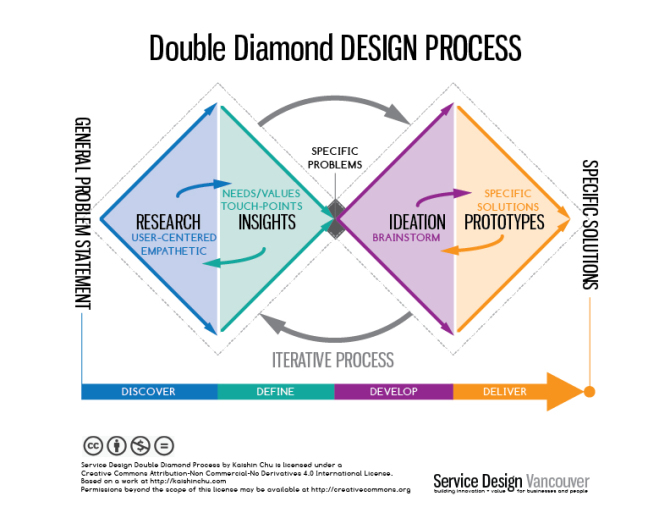
We usually worked in small groups, and presented for the big group, so that everybody got to speak and express their mind and ideas.
Mapping
We used mapping for several stages of the work – to strengthen the visual understanding of concepts, and to paint a “landscape” of what is was that we discussed.
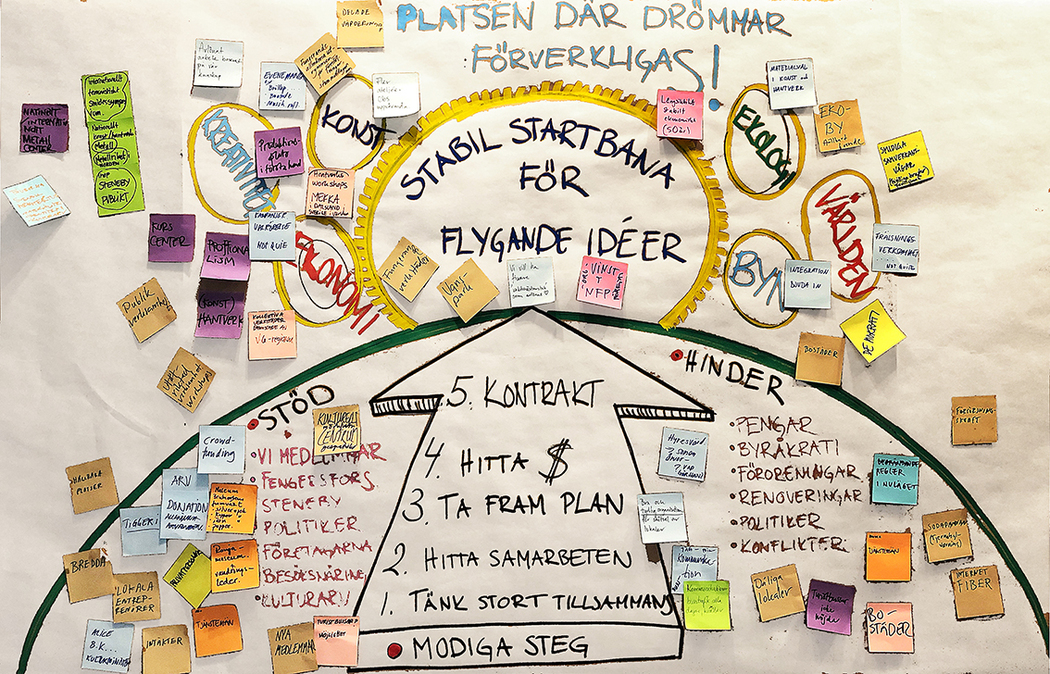
This is the main strategic “map” outlining the road towards our mission of becoming the “place where dreams are realized” (blue in the sky) by becoming a “solid run-way for flying ideas” (the sun). Leading up this is is five steps – 1, thinking together. 2, find cooperations. 3, make a plan. 4, find money. 5, sign the contract. On the left are supporting factors, on the right are obstacles. The post-it notes are comments on the strategy.
Archiving
Archiving was not a big part of the job, but very important, and we found it interesting and fundamental to dive into the history of the mill, and tell the story in a new way, focusing on the changes that has continuously reshaped the town throughout its 222 years of existence. Tying history and heritage with the future was also very important to attract the town population that are not necessarily interested in the culture center as such. Read about the history on pp 8 in the report below.
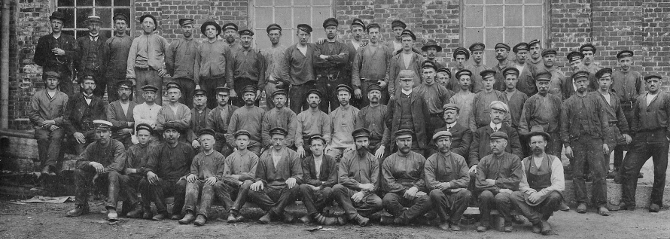
Workers at the mill in Fengersfors in 1901. Photo www.fengersforsbilder.se
Travel
On top of archiving into the history of the mill and the town in Fengersfors, we also continuously need to reevaluate our methods and relevance. Travel and networking is a central part of this and something the Not Quite community engages on a lot. For this particular work we visited, among others, the Pioneer Works Culture center in Red Hook, New York. We found a center (for all its differences between Fengersfors and downtown New York City) with vast similarities to Not Quite, seeking to shape and combine innovative culture and research within an industrial cultural heritage setting. In their case a iron work from the 1860s. A short write-up was included in the report.
Interviews
Interviews was an important part of the work – but the method will be more systematically applied in the next stage of the project. By making in-depth interviews with townspeople, also the ones usually not interested in the work at the art center, we wish to both create a better understanding for the possibilities and worries in the town – and anchor our work more deeply within the community.
Writing & Photography
We felt the need to frame and tell a different kind of story about Fengersfors, and the concept of the “mill town” in general. In the current economical landscape the mill town is steeped in prejudices and misconceptions, and we see something very different in the town where we live and work. Writing the The New Mill Town report (and trying to include great imagery and graphs) was a process long in the waiting. A start of a new way of telling our story.
Results
The main concrete result of the work so far is the report The New Mill Town (Den nya bruksorten) that summarizes the work, perspectives, ideas, and possibilities going forward.
We outlined four concrete challenges, and ideas to address them, that is and will guide our work going forward:
1. The Place, as in the physical location and community around the mill
2. Creativity, as in the power of arts and culture for its own sake – and for society
3. Sustainability, as in developing today without destroying the future. Three aspects (that build on each other)
– Ecological sustainability
– Societal sustainability
– Financial sustainability
4. Learning & Networks, as in constant contact with, and mutual change together with the world outside
The report is available in full text in English here
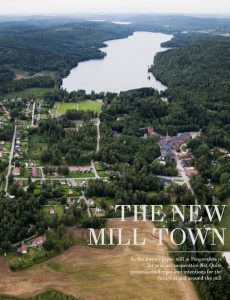
in Swedish here
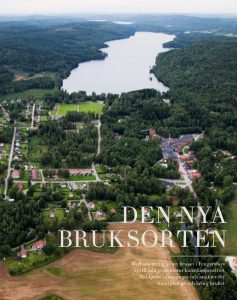
Overview of the final report above
We are now part of several processes for the future and will update this Activity report as these move forward. Also see the timeline below for updates on process.
Results from our workshop on August 23, 2018 is available in report (in Swedish) here
Results from workshop on ownership structure and priorities in February 19, 2019 is available in report (in Swedish) here
How it went
Main lessons learned
The process has helped us stay on top of our own future, and be able to define our own dreams and goals in a structured process.
Lessons:
It may be too early to make any lasting analysis of what we really learned from this process, it is still going on, and we are
very much in the middle of it. However, some general remarks so far:
- Its the small things that counts, the smiles, the energy we bring with us into a session, the idea of making it possible – together
- It is also the big things that counts. Like constantly talking to all the main players (in this case, current owner, and main public and private stakeholders). Because the big picture must hold for the community work to be able to have an impact. There is no smooth sailing without a good wind.
- Visual is the king/queen of communication. Images really helps to transfer complex ideas into concrete discussions
- The power of inclusive design for making people feel part of the solutions
- Looking outside of our comfort zone also in terms of inspirations and concepts
- Pay attention to serendipity, and don’t move faster than you can also stop and take along new ideas and perspectives
A concrete example of a rather serendipitous discovery was the making of the “New Mill Town” definition and concept. It was the result of a serendipitous process that could not have been foreseen (we compared notes and research thoughts one evening, and suddenly thinking paths and references crossed into what quickly became a table format “what if we just put those thoughts next to each other?”).
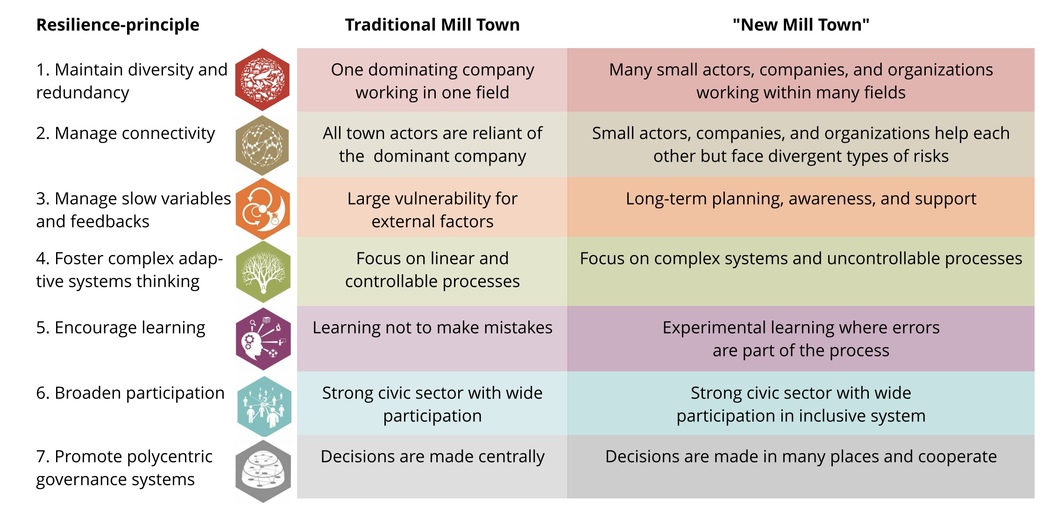
Definitions of “traditional” and “new” mill towns above are built out of our own minds – it needs much further research for verification. The principles, however, are very well researched, and among other venues presented in: “Applying resilience thinking: Seven principles for building resilience in social-ecological systems”, Stockholm Resilience Centre, 2018
Inspiration
Lots of it… (and counting)
Totnes (crazy transition town):
https://www.transitiontowntotnes.org/
Transition network (what they started):
https://transitionnetwork.org/
Design thinking (in all its forms):
https://en.wikipedia.org/wiki/Design_thinking/
Trans Europe Halles (big network of Not Quite type self built post-industrial culture centers):
http://teh.net/
The “Collective Brain” (much smaller Swedish network):
http://denkollektivahjarnan.se/
Radical inclusion (military book):
https://www.amazon.com/Radical-Inclusion-Post-9-Should-Leadership/dp/1939714109
The Ruralization of the World (Research paper):
http://research.gold.ac.uk/8558/1/ruralizationkrause.pdf
How buildings learn (TV series):
Credits
Responsible in the co-directors group of Not Quites, editor and concept : Marcus Haraldsson
Chair of the board of Not Quite and coordinator : Karl Hallberg
External advisors and contributors: Vera Telemo, Ylva Frid and Henrik Johansson
Mötesplats Steneby: Anders Lindgren
Other co-directors at Not Quite: Malin Palm, Mie Felth, Malin Robertson Harén and Olivia de Jong
The Sustainable Places project through e.g.: Elsa Dahlstrand, Monica Lindstrand and Karin Hedborg
With help from the board, engaged Not Quite members and members of the community of Fengersfors
The report that was produced is a complement to the three existing works:
– “Fengersfors Bruk i Utveckling – teknik- och industrihistoria, produktion och kreativitet , kunskap och utveckling” by Erik Juhlin, Bengt Spade and Bosse Lagerqvist from 2013 which provides a heritage and architectural overview.
– “Förstudie av bruksområde och recipient , Fengersfors-Knarrbyn” by Golder Associates from 2015 which is an
environmental study of the factory and sur rounding areas.
– “FengersforsBruk” by Kerst in Aronsson from 2017 which is the sales prospect of the cur rent owner
Activity Timeline
2017
-
Found out that the mill is for sale
The board of Not Quite learnt from the county of Åmål that the Fengersfors mill is for sale. The county declined to buy the mill, and for us at Not quite a long thinking process started. This would fundamentally affect almost all aspects of our work and lives.
-
Process to discuss possibilities and consequences
Board meetings and discussions, lots of them, but nothing much concrete happened for almost a year.
2018
-
Ownership workshop with Not Quite members
Architect Ylva Frid led a full day of workshop for Not Quite members about our ownership options and the perspectives of a building.
Ylva told about the different layers of a buildings time-perspectives – and how we now could move from a perspective of months to years, into a perspective of decades or much more. This would inevitably influence our work.
We also drew “heat maps” of how we use the space today, which places we use the most (for what) and what spaces we feel the strongest for (why).
At the end we made a structured brainstorming, and discussed favourable options for future ownership.
-
Searching for new partners
Applications and networking as widely as possible. Speaking to major stakeholders both private and public. And writing of applications for funding of a more in-depth process.
Application for collaboration with Steneby below:
-
Collaboration with Steneby
Mötesplats Steneby, at the Steneby School of Arts and Craft agreed to assist financially with this period of crucial processing.
-
Brukets framtid - workshop on the future of the mill - village participation
Henrik Johansson from Fantastic Studios, resilience consultant Vera Telemo, and Not Quite Co-Directors Karl Hallberg and Marcus Haraldsson led the workshop, using the process described under workshop above.
One of the first steps was to formulate and agree on the process forward – in “five bold steps” of:
1: Think big together
2: Find collaborators
3: Develop a plan
4: Find money
5: Contract for the building -
Continued networking
Talking to more people, networking, and processing the process ahead. And invitation to continued process.
-
The New Mill Town report
The report outlined the basis and vision of The New Mill Town.
The start of a resilience definition of a New Mill Town:
-
Ownership workshop
Major stakeholders, Not Quite members, townspeople, and clerks from public institutions invited to workshop about the future ownership of the mill.
Read the full workshop report (in Swedish), written by Vera Telemo, here (link in image):
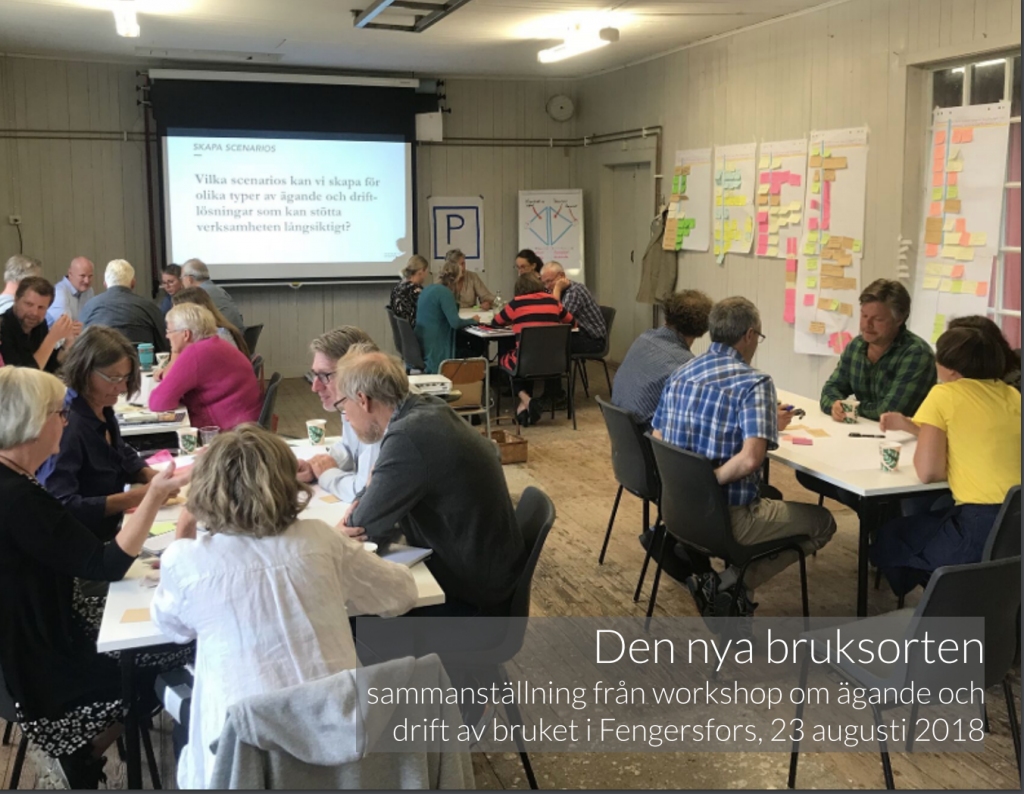
-
Working group meeting - ownership process
Discussing the way forward, and how to realize the best scenario of ownership.
-
Study visits and interviews - spreading the word
We now started visiting similar cases around Sweden and Europe to better understand how others have solved similar situations.
Vera Telemo visited Röstånga in southern Sweden where the village has started a collective for buildings and development. (link in image)
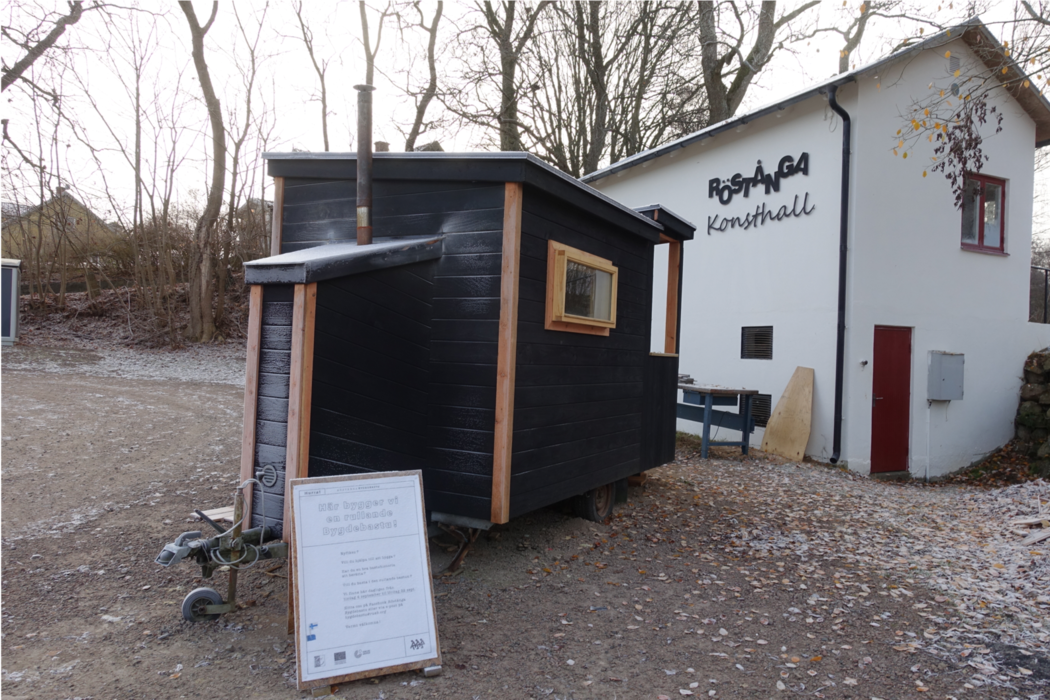
Mie Feldt visited IFÖ Center in Bromölla, where an art cooperative is buying a big factory complex and setting up a village company
and we also brought up our case and sought advice with the Trans Europe Halles, TEH, European network of independent culture centers where we are long time members. Five members went to the TEH fall meeting in Paris:
-
Website created
Published new project website to keep stakeholders informed about the process: http://www.dennyabruksorten.se/
2019
-
Fictitious AGM for The New Mill Town AB
Next wide-invite meeting to start making decisions on the future of the mill.
We called this a “Fictitious AGM”, and here we invited central stakeholders from the village, private companies, authorities, universities and politicians to discuss the result of our work. The suggestion was to co-create a shareholding company with limitations on profit, to make sure investments would go back into the building and development of the place.
During the workshop we worked on three questions:
- Who should co-own the factory, and should anyone be in majority?
- What should the company focus on? – along the line of our four focus areas 1, place, 2, creativity, 3, sustainability, networks and learning
- What should the company do?
-
Report from Fictitious AGM
Results from the Fictitious AGM suggested an ownership structure where Not Quite has an active role but are in the minority.
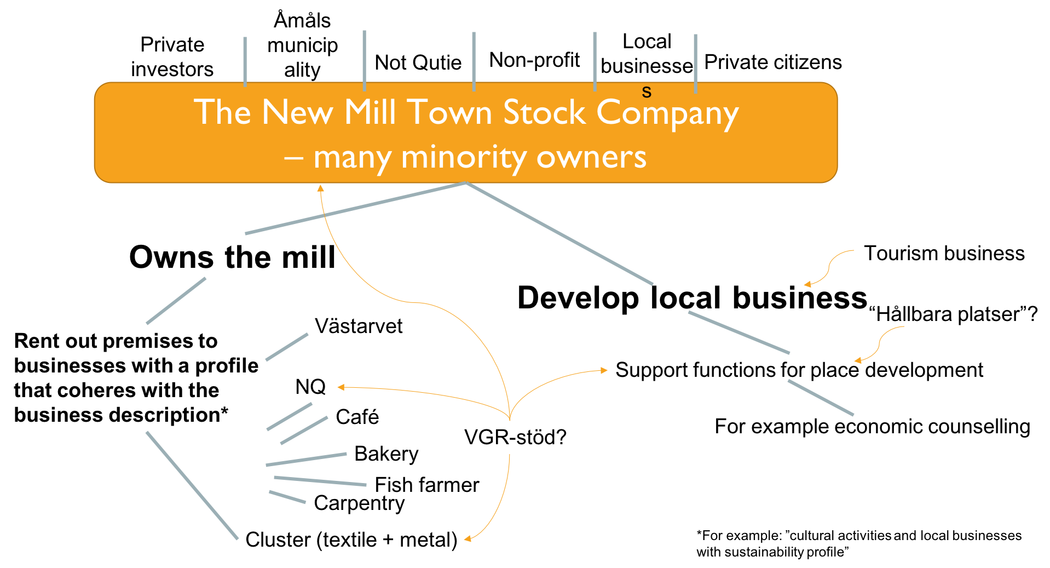
The suggestion was to focus the work on
- Buildings
- Economy, and
- Ecology
Full report available here:
-
Not Quite decides to create new ownership company
At the AGM of Not Quite economic association the members voted and decided to create a shareholder company tasked with buying and running the mill. Not Quite want to be a minority owner in the new company and will lead the process.
-
Presentation for H2020 project CLIC
Presentation of The New Mill Town for the H2020 CLIC European research project on circular models for adaptive reuse of cultural heritage places. The meeting turns out being important for the future process.
-
Grant for crowdfunding
Grant from Fyrbodal association of towns to develop crowd funding to buy the factory.
2020
-
Grant for project coordination The New Mill Town
Region Västra Götaland approved a project worth SEK 4,5 million (with regional co-funding of SEK 1,3 million)
The project enables Not Quite to hire a project leader, Ylva Frid, to work on five themes over three years to lead the work to buy the property. The five sub-projects are:
1 – Business Plan for the new ownership
2 – Creative Crowdfunding to enable purchase
3 – Not Quite Toxic, project to use plants to clean toxic waste
4 – Not Quite Real, project and business incubation platform
5 – Master plan for buildings and property that incorporates strategic development for architecture, usage, heritage, technical status and financial sustainability
Project description (in Swedish): Projektbeskrivning Den nya bruksorten
-
Workshop for crowdfunding campaign
-
Business Model Workshop with CLIC
Three days of work to create a viable business model for the new company.
-
Follow up from CLIC/ ICHEC
All the materials from the February 18 workshop have been catalogued by ICHEC – Ruba Saleh and Philippe Drouillon – in Brussels and they present us a plan for future work.
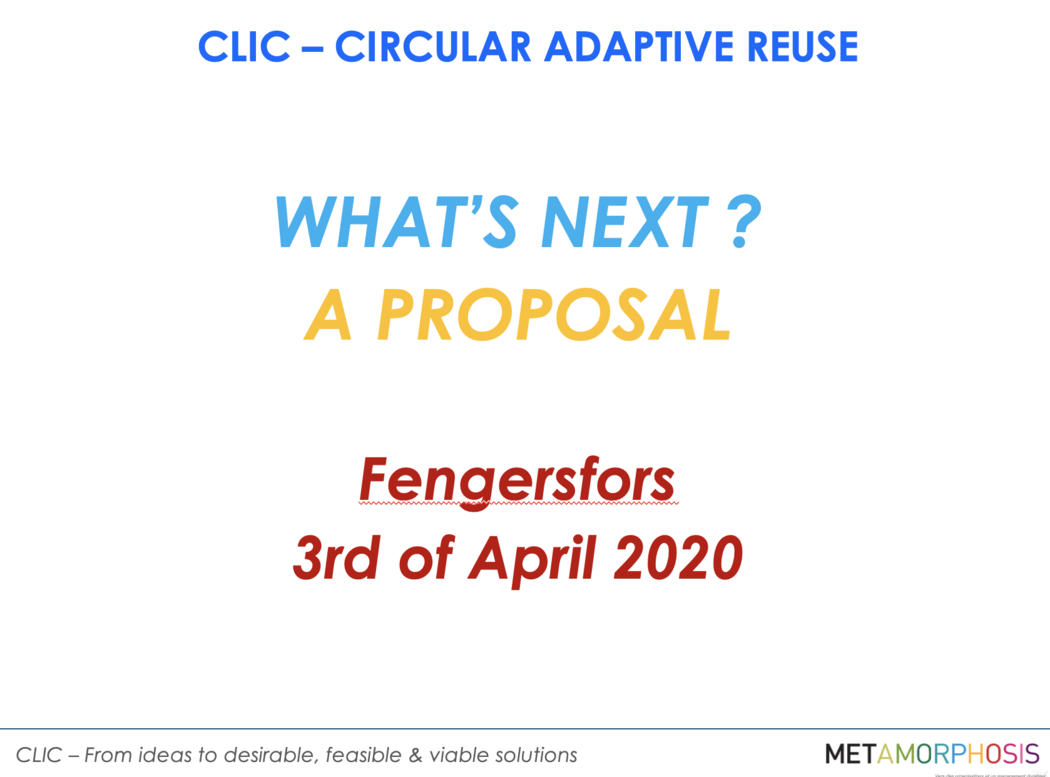
Six streams of revenues, with draft business model plans, have been identified from our materials, and as we speak a seventh one gets added – the actual purchase of the factory.
-
Crowd funding campaign start - Bit för bit / Tiotusenbitarspusslet
An artistic crowd funding initiative starts to collect money – and spread awareness of the process – to buy the factory. It is composed of an online part, and a physical installations. Each contributor gets a part of the aggregated installation.
-
Presentation by Ylva Frid at Arkitekturdagarna i Malmö 2020.
Tema, att bygga för kulturen (presentation about The New Mill Town (Swedish) starts at 23.20):
-
Presentation at Reväst
Lecture by Marcus Haraldsson at Reväst seminar, on the role of culture for regional development, in Borås (image contains link to video in Swedish)
https://drive.google.com/file/d/1Vrfeq_qlDaoHscgoVFiamBMCfGokqNYz/view?usp=sharing
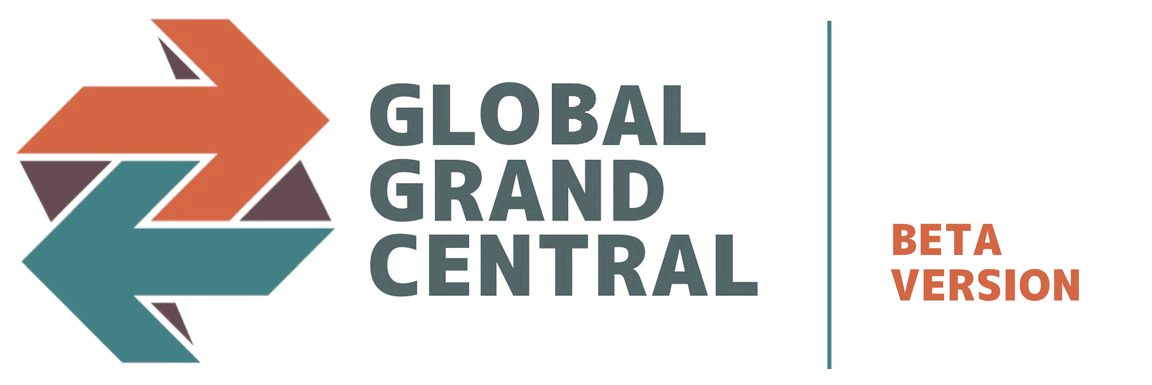
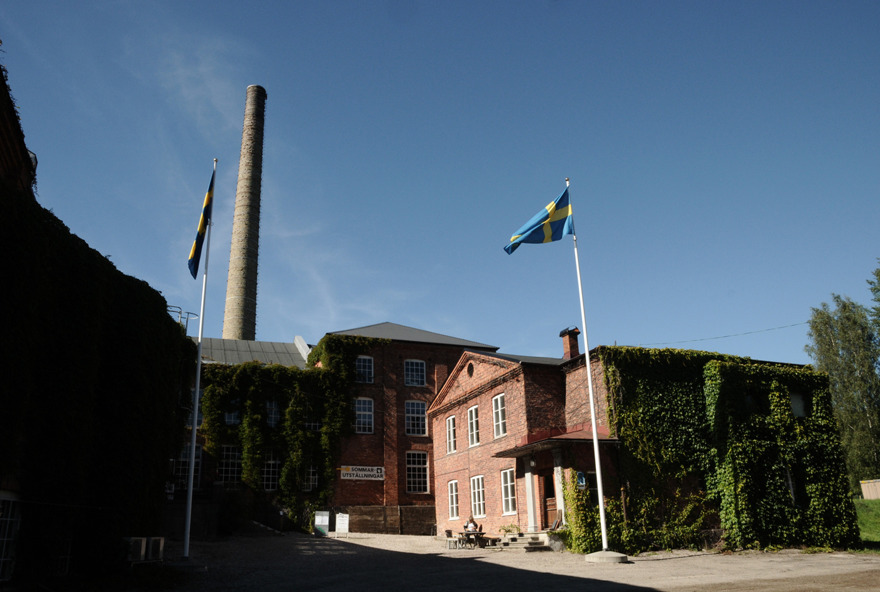
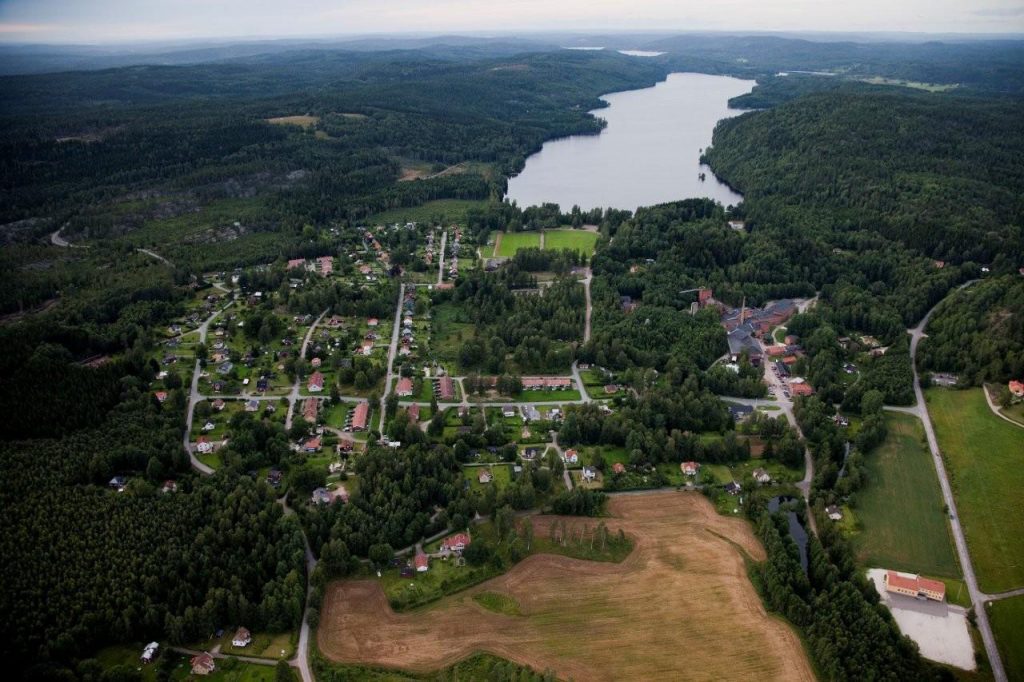
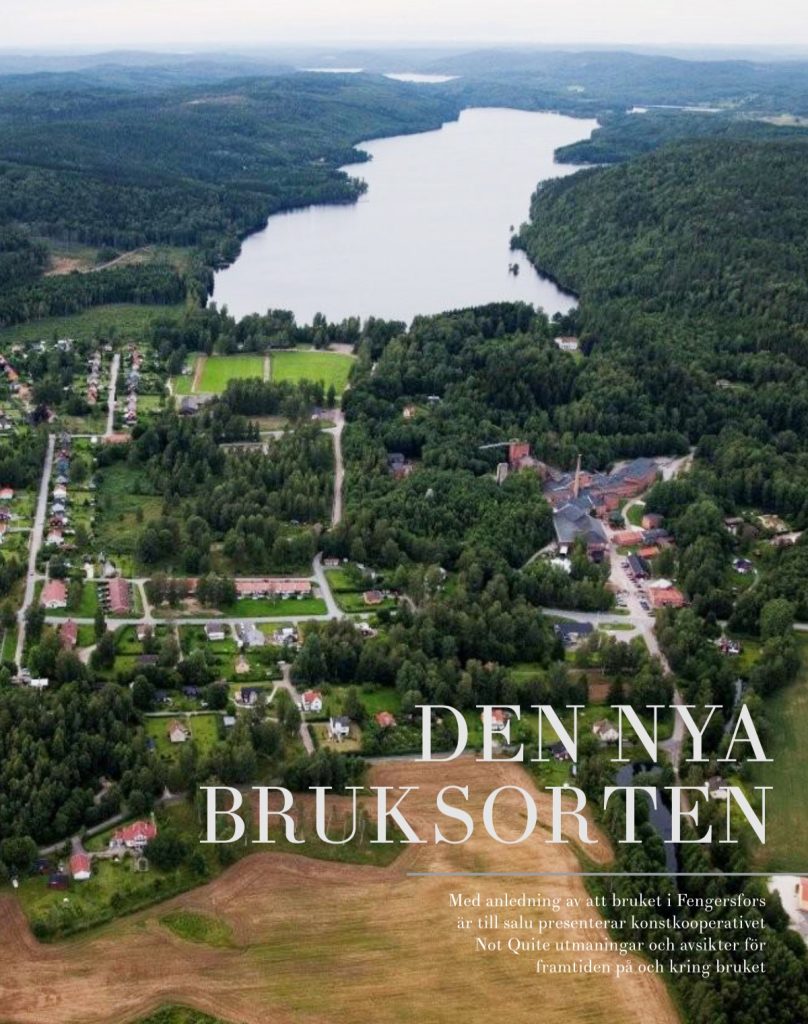
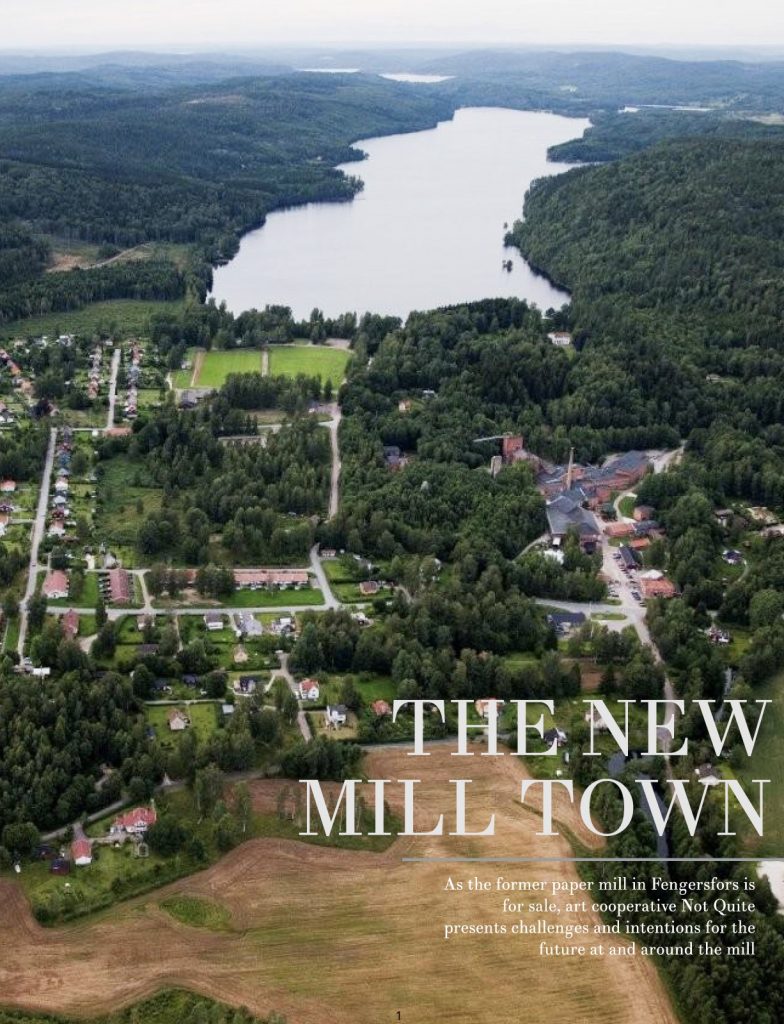
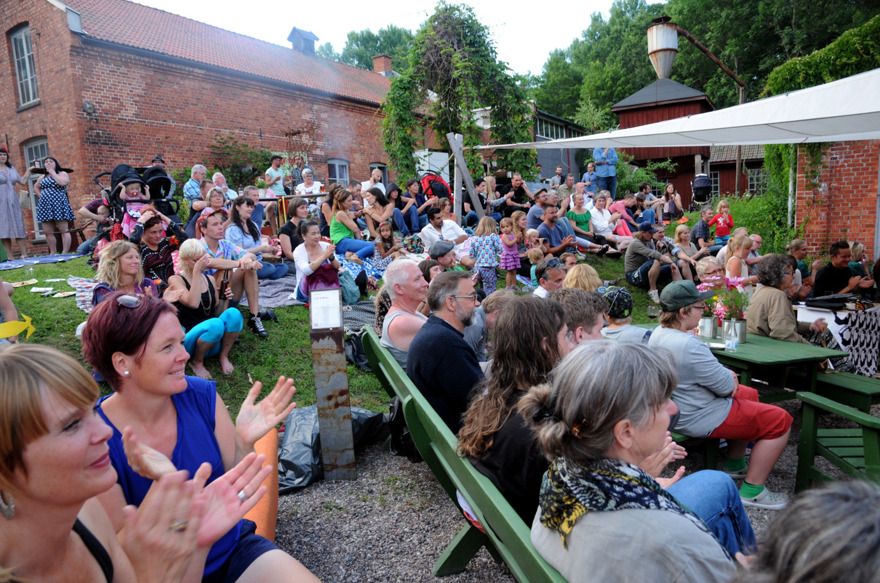
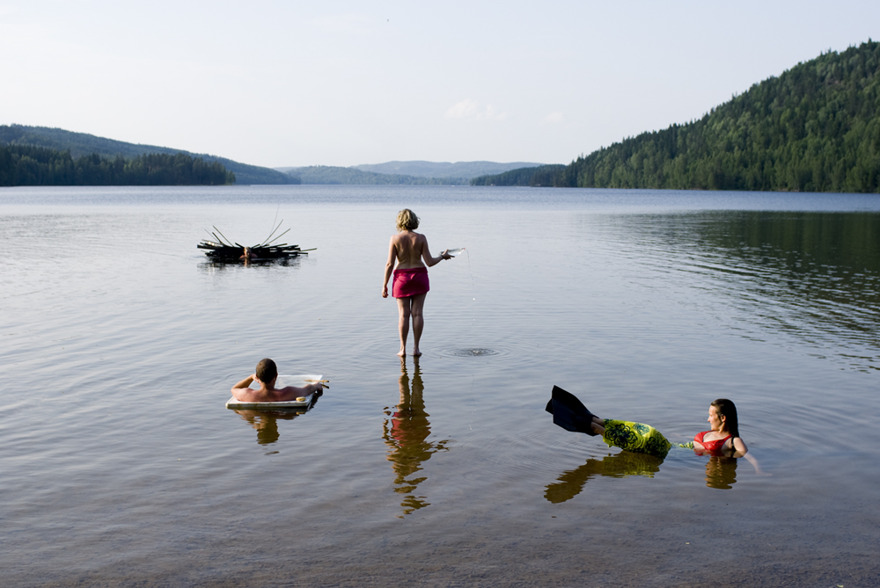
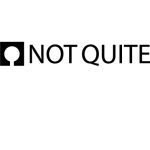 An activity by
An activity by 